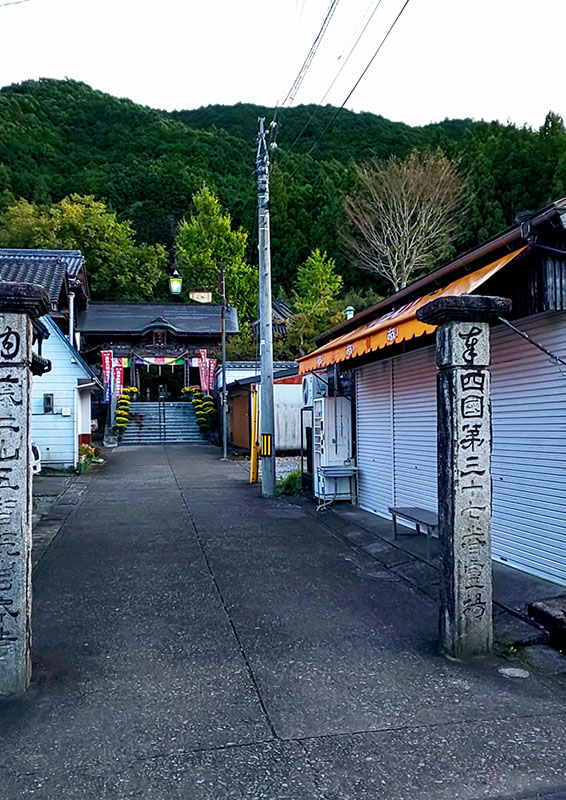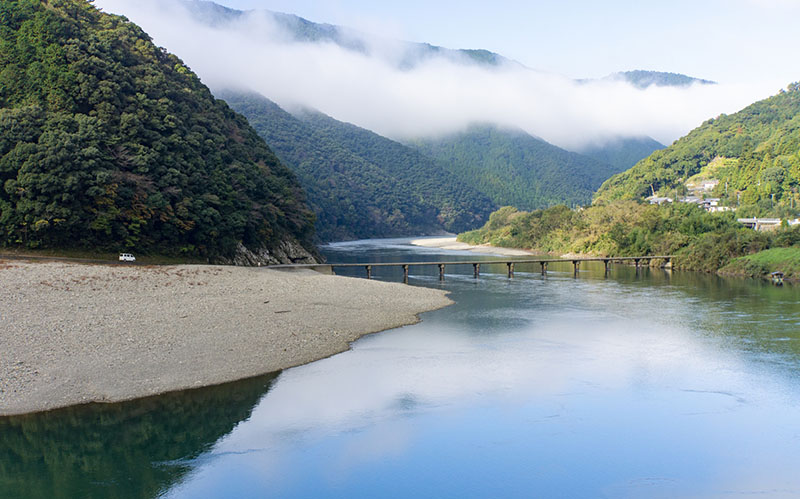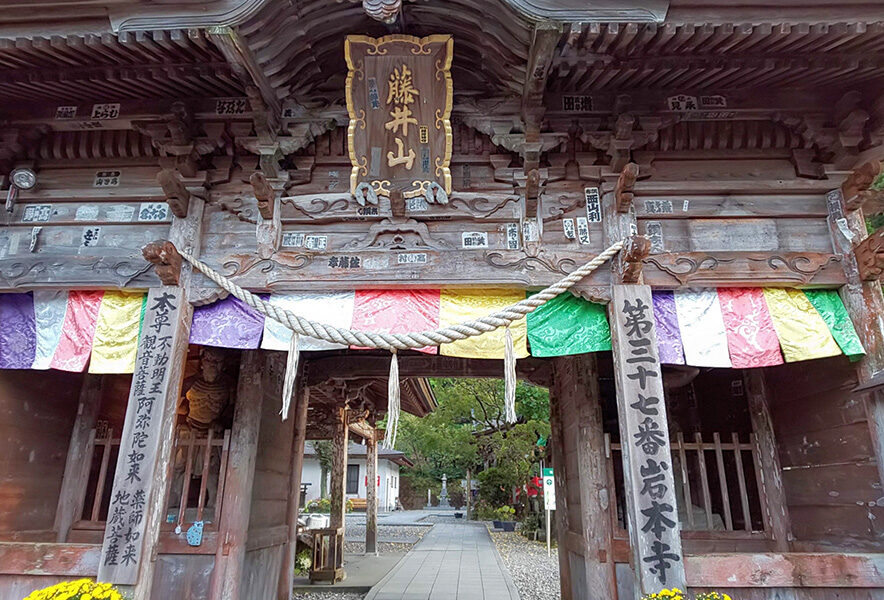- History of Iwamotoji Temple
- A Iwamotoji temple with five main deities
- The ceiling painting in the main hall is a must-see.
- Iwamotoji Temple has a popular shukubo (lodging house)
- Things to do around Iwamotoji Temple
- Access to Iwamotoji Temple, Fujiizan Gochiin, Chizan School of Shingon Buddhism
- Parking around Iwamotoji Temple
- Iwamotoji Temple Official Website
- Recommended around Iwamotoji Temple
History of Iwamotoji Temple
The predecessor of Iwamotoji Temple is said to have been Fukuenmanji Temple, which had seven branch temples and was a separate temple of Nida Myojin, built by Gyoki Bodhisattva at the order of Emperor Shomu to pray for the immediate destruction of the seven afflictions and the immediate birth of the seven blessings.
During the Tensho Period, both the temple and shrine temporarily declined due to military fires, etc., and Iwamoto-bo (now Iwamoto-ji Temple), which had jurisdiction over shrines in the area, succeeded to the Buddhist lantern and the position of Betsudo.
During the Warring States Period and Edo Period (1603-1867), the temple received donations from warlords and feudal lords, and prospered as a Buddhist temple that combined Shinto and Buddhist teachings.
During the Meiji period (1868-1912), the temple suffered from the legal difficulties caused by the movement to abolish Buddhism and was rebuilt little by little.
A Iwamotoji temple with five main deities
The Iwamoto-dera Temple has a whopping five Gohonzon (main deities).
It is rare to have more than one Gohonzon, including Fudo Myoo, Kannon Bosatsu, Amida Nyorai, Yakushi Nyorai, and Jizo Bosatsu.
There are shrines within the precincts of temples, but this is the only temple among the 88 temples where more than one Gohonzon is enshrined.
It seems that there are five times as many blessings at one time.

The ceiling painting in the main hall is a must-see.
There are a total of 575 board paintings inlaid into the ceiling of the main hall, and they were submitted by the general public regardless of age, professional or amateur.
There are temples and shrines that have a single painting on the ceiling, but the freedom to create a uniformity, or lack thereof, is innovative and fun to see.
Iwamotoji Temple has a popular shukubo (lodging house)
Shukubo are clean and have baths where you can stretch out your arms and legs and relax.
Shukubo at Iwamotoji Temple range from shared rooms separated by sliding doors over 40 tatami mats to private rooms of 6 tatami mats.
Accommodations for sightseeing or business are also available.
Inside the lodgings, “tenugui” hand towels and sugegasa umbrellas are available for sale, and coin-operated laundry facilities are also available to support a comfortable pilgrimage.
Guests (pilgrims) can participate in the morning service in the main hall, which is a popular experience unique to shukubo travel.
Shukubo” rates range from 6,000 to 6,500 yen per night with two meals (reservations required.)
Youth Hostel” costs 3,200 yen for lodging (1,000 yen more for non-YH members), 600 yen for breakfast, and 1,000 yen for dinner.

Things to do around Iwamotoji Temple
Niida Gosha Shrine
Many stories about Odaishi-sama were also found at the Niida Gosha Shrine.
There are many stories about Odaishi-sama, such as: the childbirth of a child is assured by praying to the cherry blossoms on the shrine’s grounds; chestnuts bear fruit three times a year when the blessing is made into roasted chestnuts; leaches without mouths stop sucking blood when the blessing is made; cherry shells turn into shells when the blessing is made into fallen cherry blossoms; and the door of a house stops being robbed when Odaishi-sama makes the blessing as a thank you for letting him stay there. There are also legends about the Tatezu village headman.
How about a rare “chestnut shochu”?
Dabada Hiburi, a famous chestnut shochu liqueur, is made by Mute Mukan, located in Shimanto Town.
Kochi Prefecture is said to have many sake breweries.
There is a place called Shochu Bank, where they keep the shochu and mature it.
River fun at the “Shimanto River,” said to be the last clear stream.
You can enjoy a sightseeing boat on the Shimanto River.
The boat is small and the boatman will guide you.
The water is so clear that you can see fish swimming in the river, which explains why it is called the last clear stream.
In Shikoku, there are many bridges without parapets, called sunken bridges, which are built to reduce the risk of trees and other debris from the mountains getting caught on the parapets and causing the bridge to wash away when the river level rises.
Shimanto River also has sunken bridges, and the sunken bridges seen from the river offer a peaceful and picturesque original landscape of mountains, river, and sunken bridges.
If you are not used to crossing bridges without parapets, it may be a little scary.
You can taste the ingredients nurtured by the Shimanto River.
It is a clean river, so it is not easy to eat natural eels, but why not try natural eels from the Shimanto River?
Unlike farm-raised eels, the skin is a little tougher because it was raised in nature, but it is fatty and delicious.
The price is a little high, but if it is said to be natural, it is an acceptable price.
Small river shrimps can be eaten deep-fried, and the aosa nori is a standard Kochi souvenir.

Access to Iwamotoji Temple, Fujiizan Gochiin, Chizan School of Shingon Buddhism
・Shimanto-cho, Shigekushi-machi 3-13, Takaoka-gun, Kochi 786-0004
・10 min. walk from “Kubokawa Station” of JR Dosan Line
Parking around Iwamotoji Temple
Iwamotoji Temple Official Website
Official site:https://88shikokuhenro.jp/en/fujiizan-gochiin-iwamotoji/
